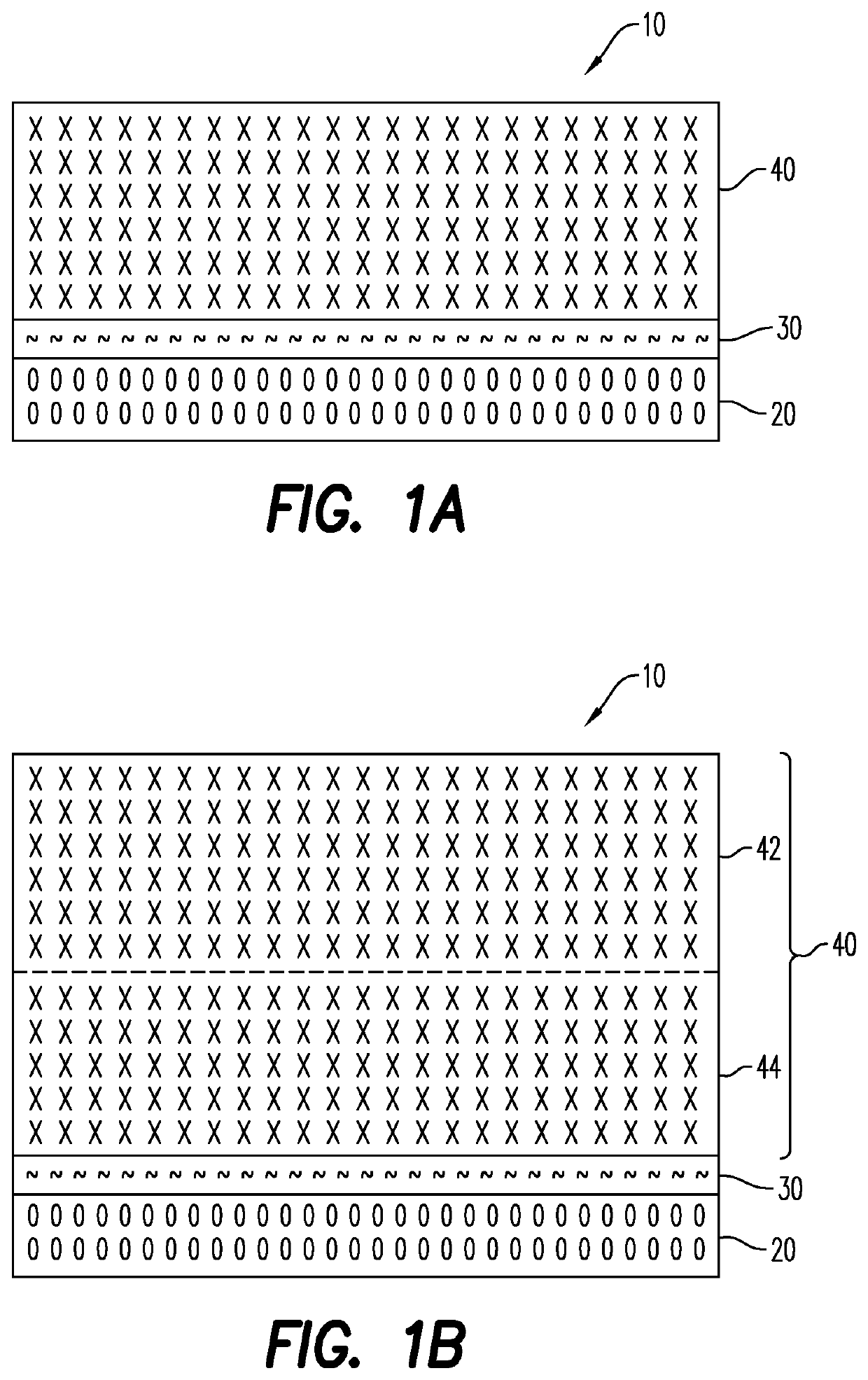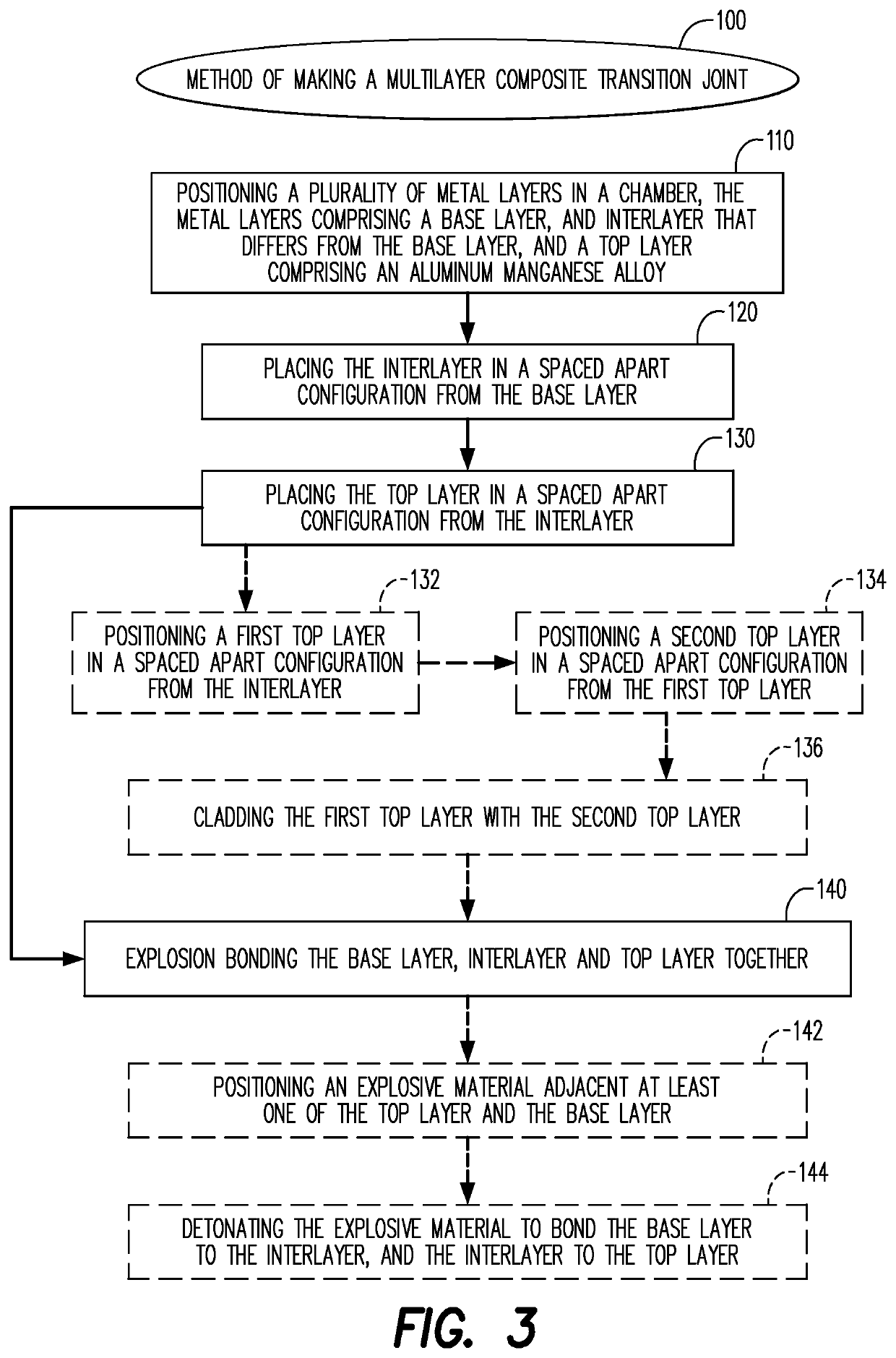Multilayer transition joint for aluminum smelter and method of making
a technology of aluminum smelter and multi-layer transition joint, which is applied in the direction of manufacturing tools, non-electric welding apparatus, superimposed coating process, etc., can solve the problem of shorter stem
- Summary
- Abstract
- Description
- Claims
- Application Information
AI Technical Summary
Benefits of technology
Problems solved by technology
Method used
Image
Examples
example
[0039]Sample transition joints were generally configured to test their mechanical strengths after exposure to elevated temperatures. The transition joints include multiple layers of metal, each layer being bonded to an adjacent layer by an explosion clad welding process. The sample transition joints were then placed in ovens, each oven having a set temperature of 30° C., 300° C., 400° C., 500° C. or 600° C. After 24 hours, each sample was removed, cooled to room temperature, and their tensile / mechanical strengths were tested.
[0040]Sample 1 was a transition joint including a layer of steel, a layer of un-alloyed aluminum (such as 1000 series grade aluminum) having a thickness of 12.7 mm, and a layer of titanium sandwiched therebetween. Sample 2 was a transition joint including a base layer of steel, an interlayer of titanium, and a top layer of an aluminum manganese alloy having a thickness of 23.0 mm. Both samples were exposed to elevated temperatures. After being exposed to 600° C....
PUM
| Property | Measurement | Unit |
|---|---|---|
| Temperature | aaaaa | aaaaa |
| Temperature | aaaaa | aaaaa |
| Fraction | aaaaa | aaaaa |
Abstract
Description
Claims
Application Information
 Login to View More
Login to View More - R&D
- Intellectual Property
- Life Sciences
- Materials
- Tech Scout
- Unparalleled Data Quality
- Higher Quality Content
- 60% Fewer Hallucinations
Browse by: Latest US Patents, China's latest patents, Technical Efficacy Thesaurus, Application Domain, Technology Topic, Popular Technical Reports.
© 2025 PatSnap. All rights reserved.Legal|Privacy policy|Modern Slavery Act Transparency Statement|Sitemap|About US| Contact US: help@patsnap.com



